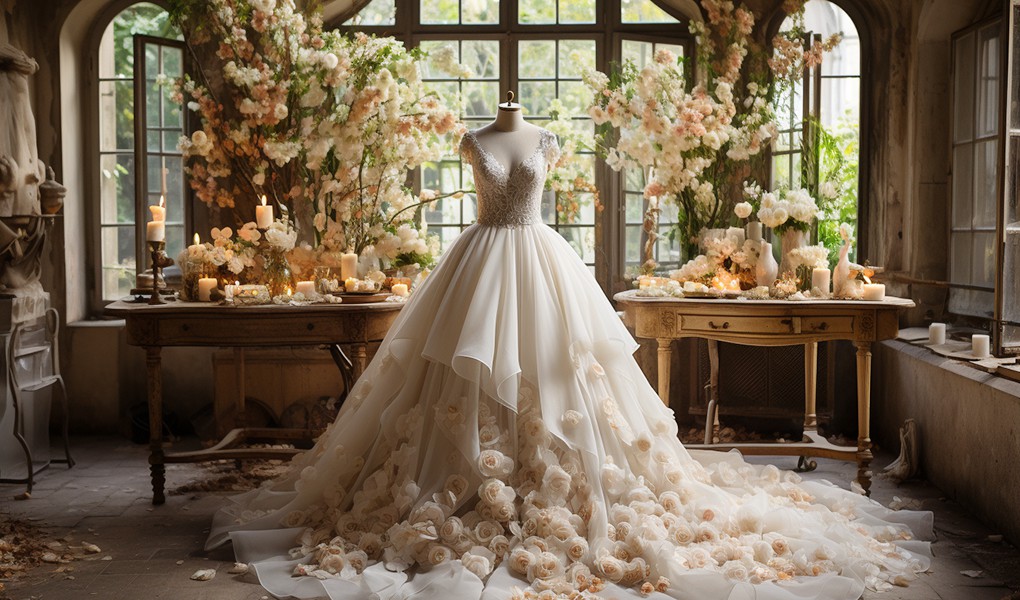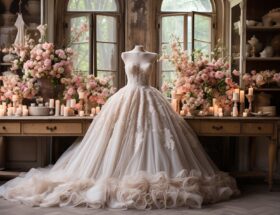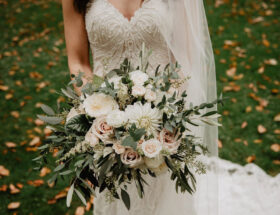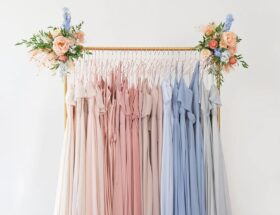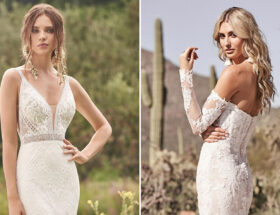Selecting the perfect wedding dress involves considering a multitude of factors, with the fabric being a key element that significantly influences the overall look and feel of the gown. Wedding dress fabrics come in a wide range of textures, weights, and finishes, each contributing to a unique aesthetic. In this guide, we’ll explore various wedding dress fabrics and provide insights on how to choose the ideal fabric for your dream gown.

- Lace: Lace is a timeless and romantic choice for wedding dresses. From delicate Chantilly lace to intricate Alençon lace, there are numerous lace wedding dress types to choose from. Lace adds a touch of elegance and can be used for various dress components, including sleeves, bodices, and overlays.
- Satin: Satin is known for its luxurious and smooth finish. This heavy and glossy fabric is perfect for creating structured silhouettes and is often used in ballgown-style wedding dresses. Satin drapes beautifully and offers a timeless appeal.
- Tulle: Tulle is a lightweight and airy fabric that is often used for creating voluminous skirts and veils. It can be layered to add depth to a gown and is perfect for achieving a fairy-tale or ethereal look. Tulle also works well for overlays and intricate details.
- Chiffon: Chiffon is a sheer and lightweight fabric that creates a soft and flowing appearance. It’s commonly used for A-line and sheath-style dresses, as well as for creating delicate sleeves and overlays. Chiffon adds a sense of movement and is popular for beach and destination weddings.
- Organza: Organza is similar to chiffon but has a slightly stiffer texture, adding more structure to the dress. It’s often used for creating dramatic silhouettes and statement skirts. Organza can also be layered to achieve a multidimensional effect.
- Crepe: Crepe is a versatile fabric known for its subtle texture and draping qualities. It’s a great choice for modern and minimalist wedding dresses, offering a sleek and elegant look. Crepe is often used for sheath and column-style gowns.
- Silk: Silk is a luxurious and natural fabric that comes in various types, such as silk satin, silk chiffon, and silk charmeuse. Silk offers a rich texture and a lustrous finish, making it a preferred choice for elegant and sophisticated wedding dresses.

Choosing the Right Fabric
When choosing the your wedding dress fabrics, consider the following factors:
- Style: Determine the style of dress you envision. Different fabrics work better for different styles, so choose a fabric that complements the overall design.
- Comfort: Consider the weather and the comfort level of the fabric. Heavier fabrics like satin and brocade may be more suitable for cooler seasons, while lightweight fabrics like chiffon and tulle are ideal for warmer weather.
- Body Type: Certain fabrics may flatter your body type more than others. For example, structured fabrics like satin can provide shape, while flowy fabrics like chiffon can create a softer silhouette.
- Budget: Keep in mind that different fabrics come at varying price points. Lace and silk tend to be more expensive, while polyester blends offer more budget-friendly wedding dress options.

Conclusion
In the world of wedding dresses, the choice of fabric holds immense significance. Whether you dream of a lace-adorned gown, a satin masterpiece, or a chiffon creation, the fabric you choose will influence the overall appearance and comfort of your dress. By considering your style, comfort, body type, and budget, you can confidently select the perfect fabric that will bring your wedding dress vision to life on your special day.

